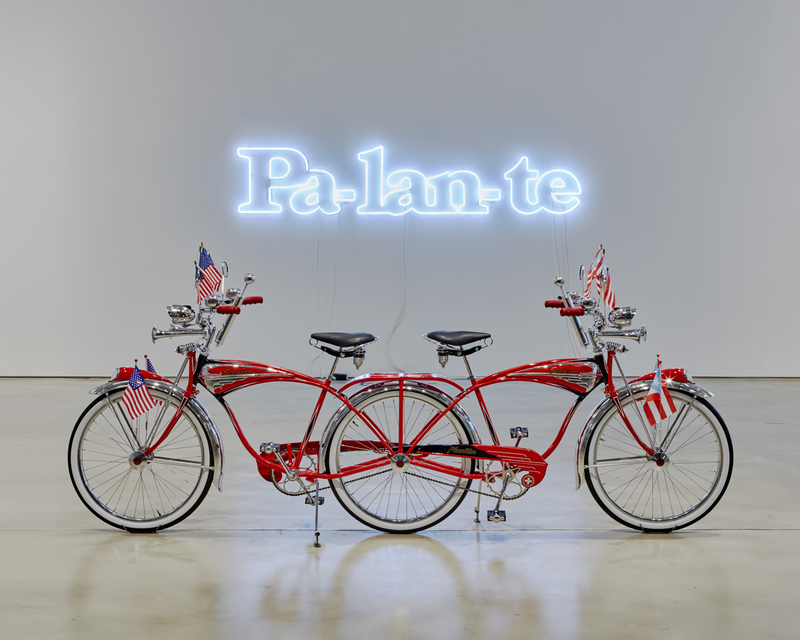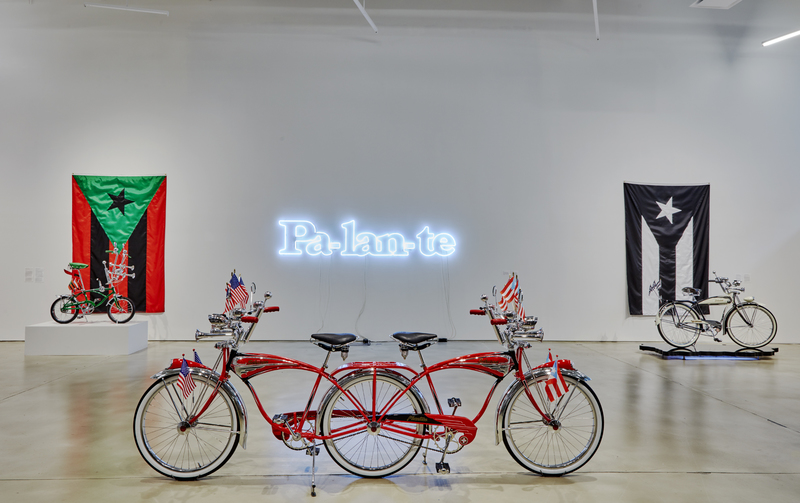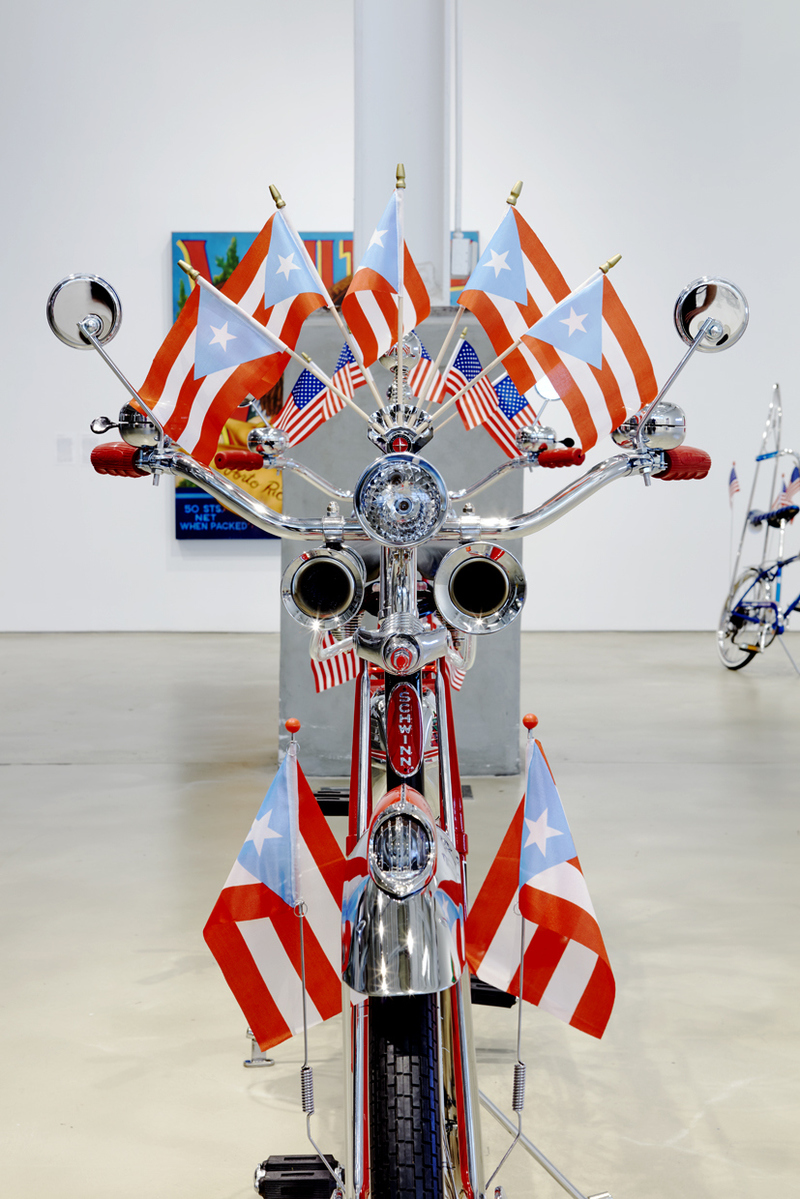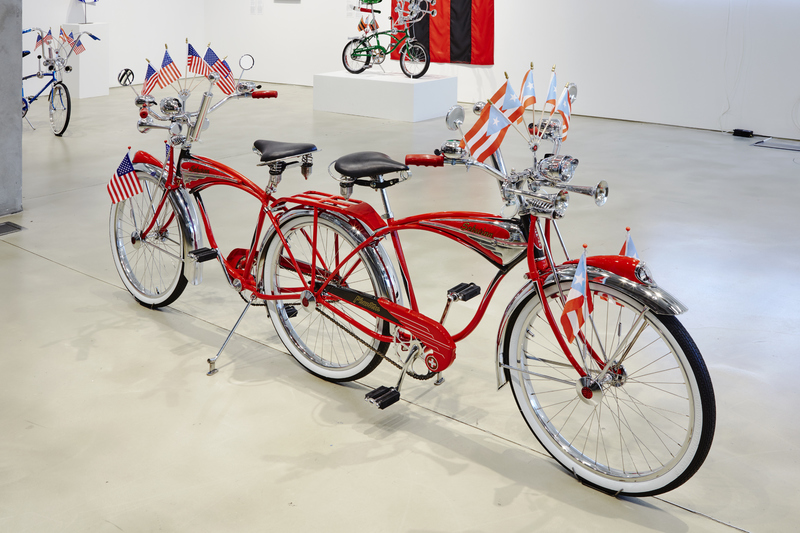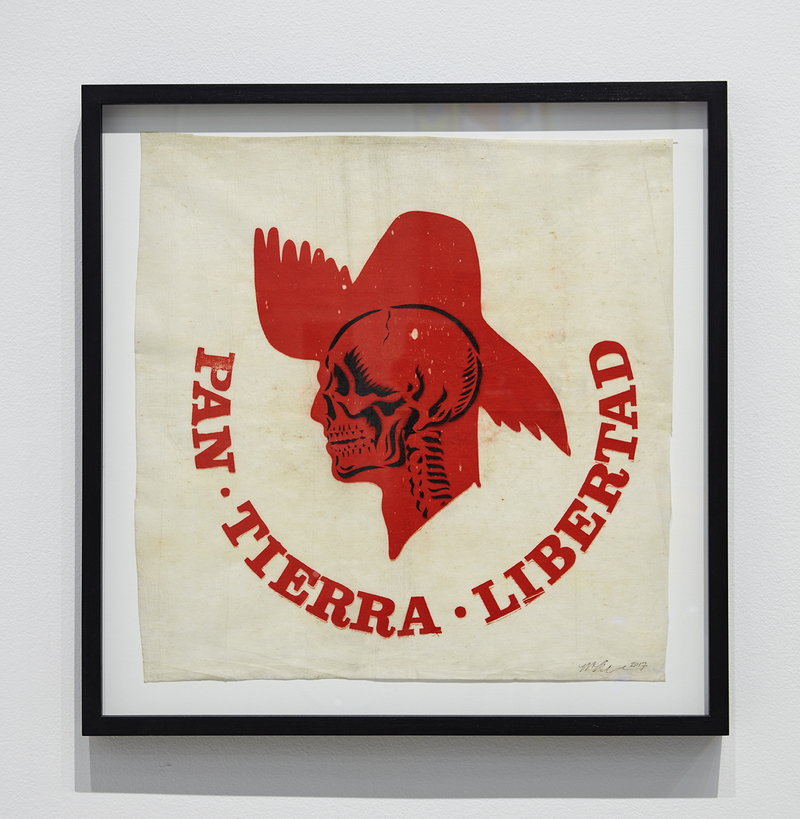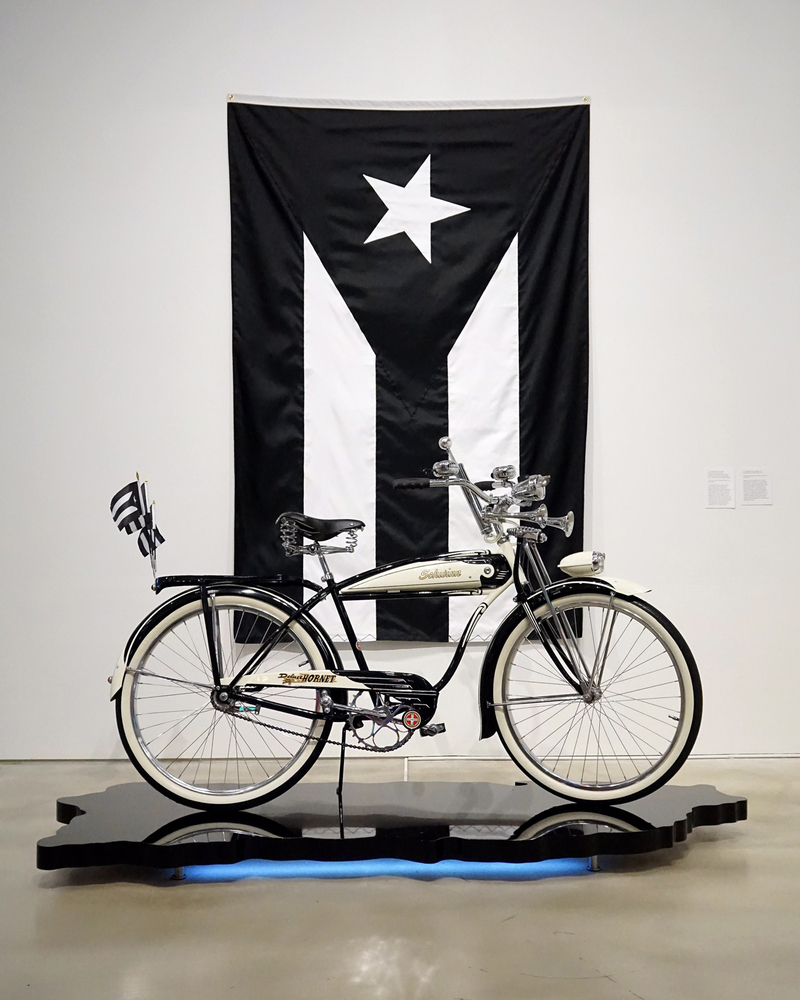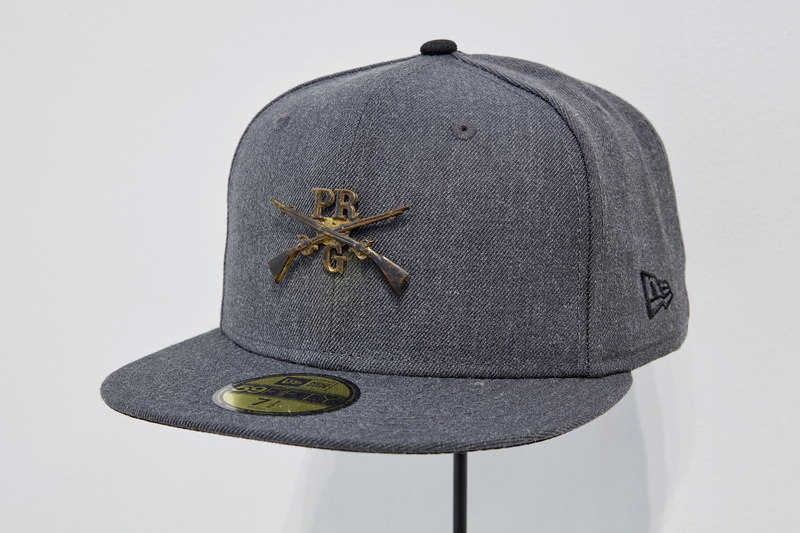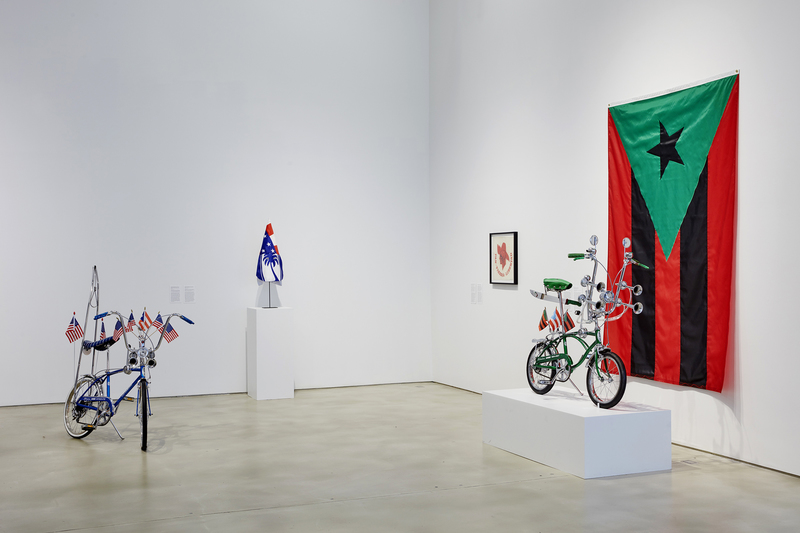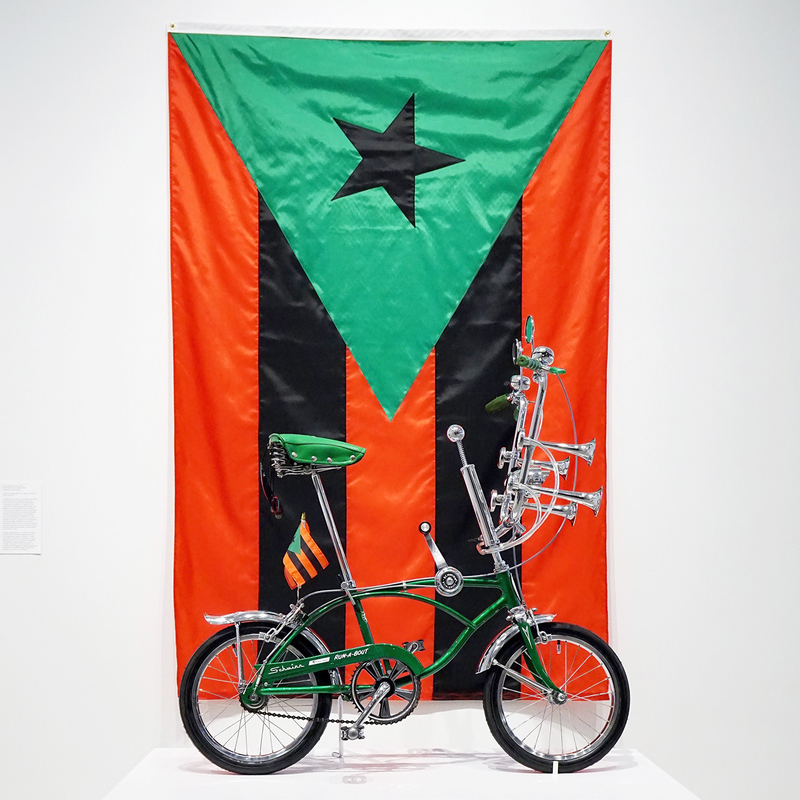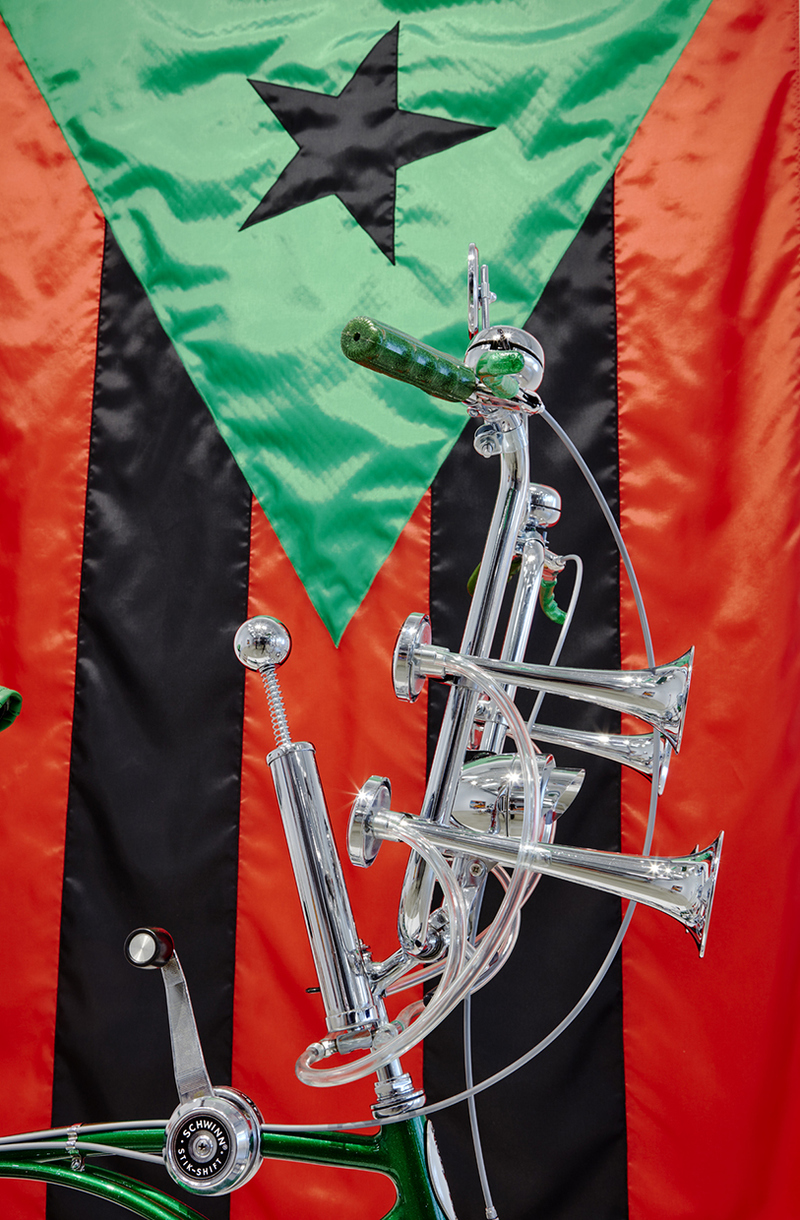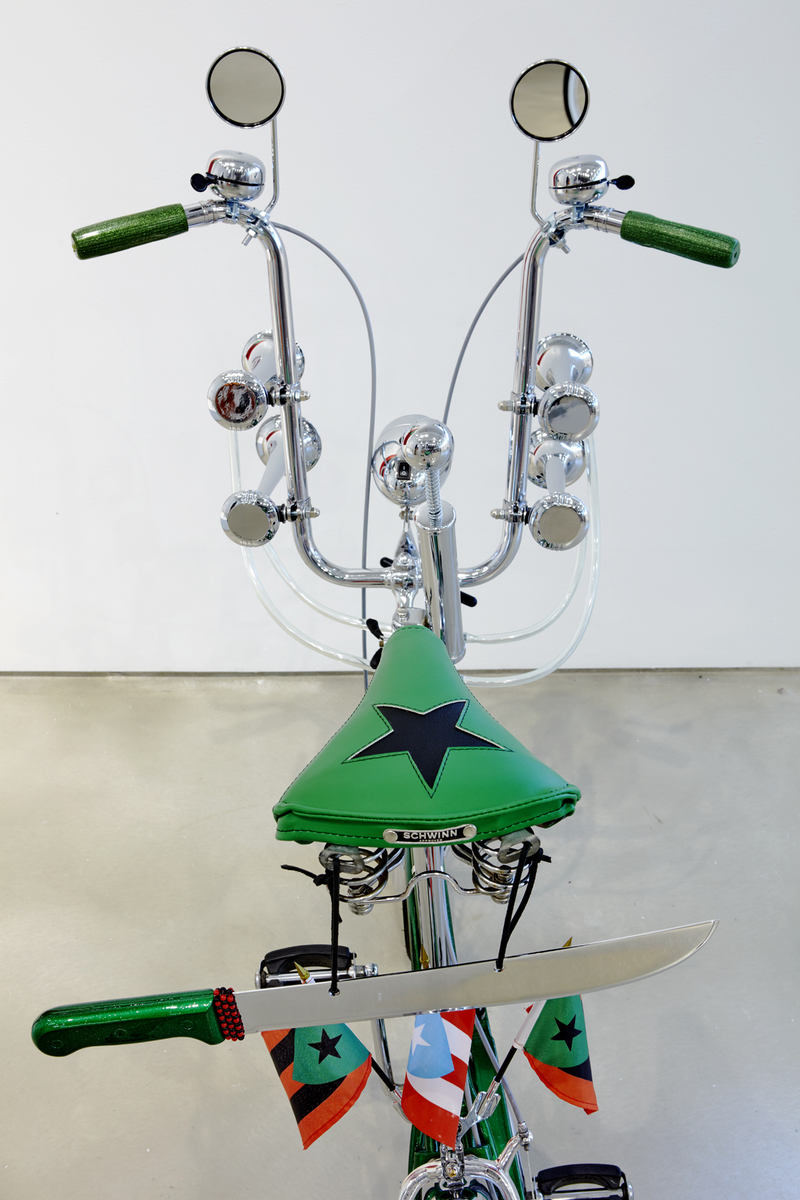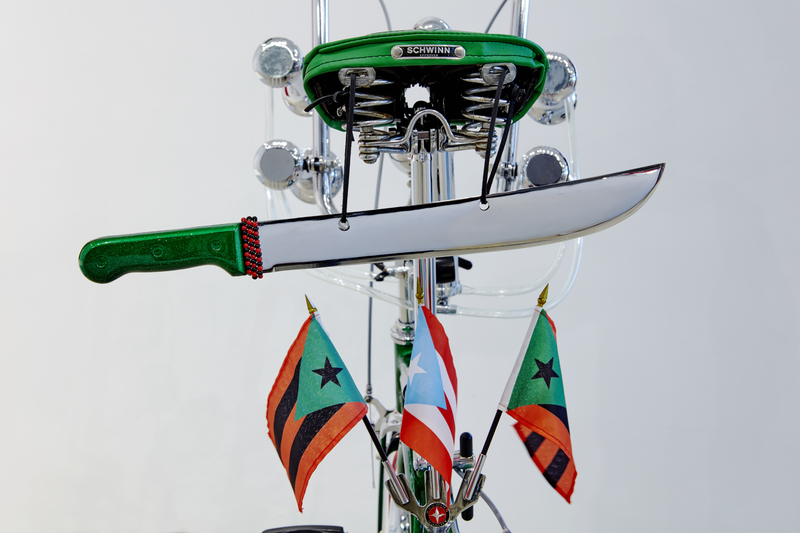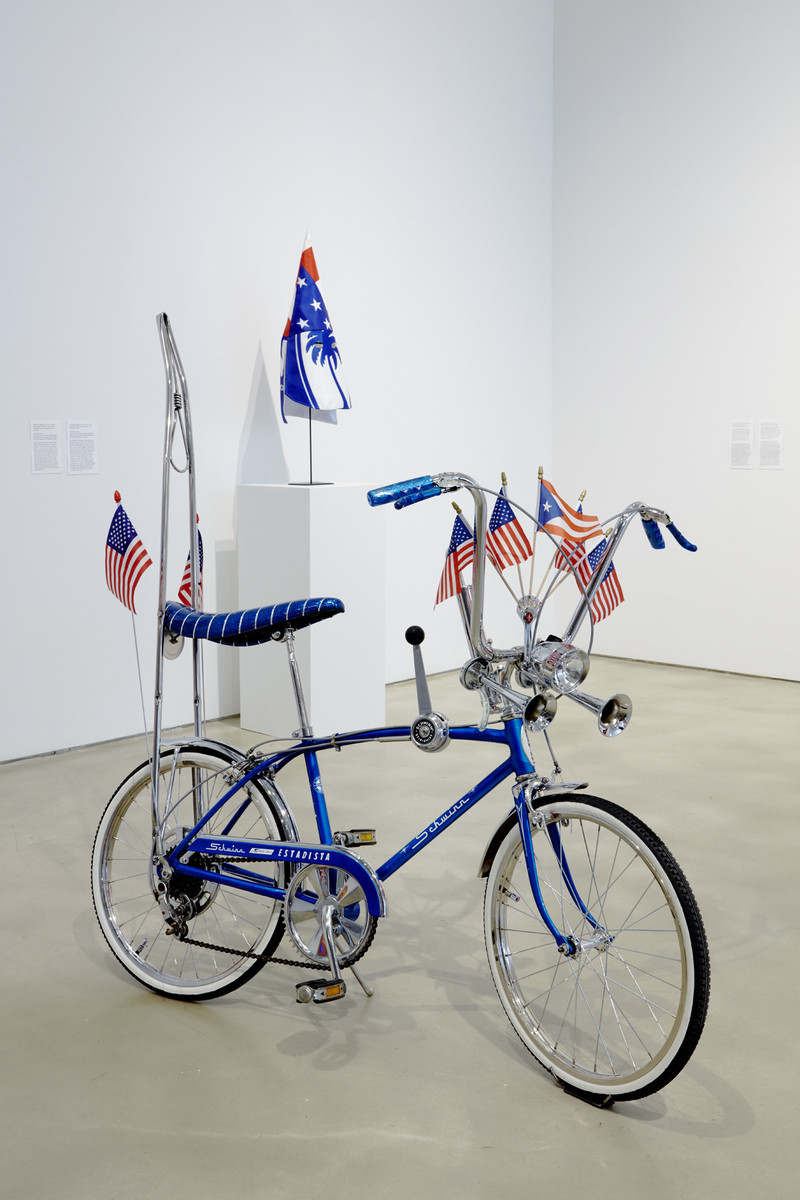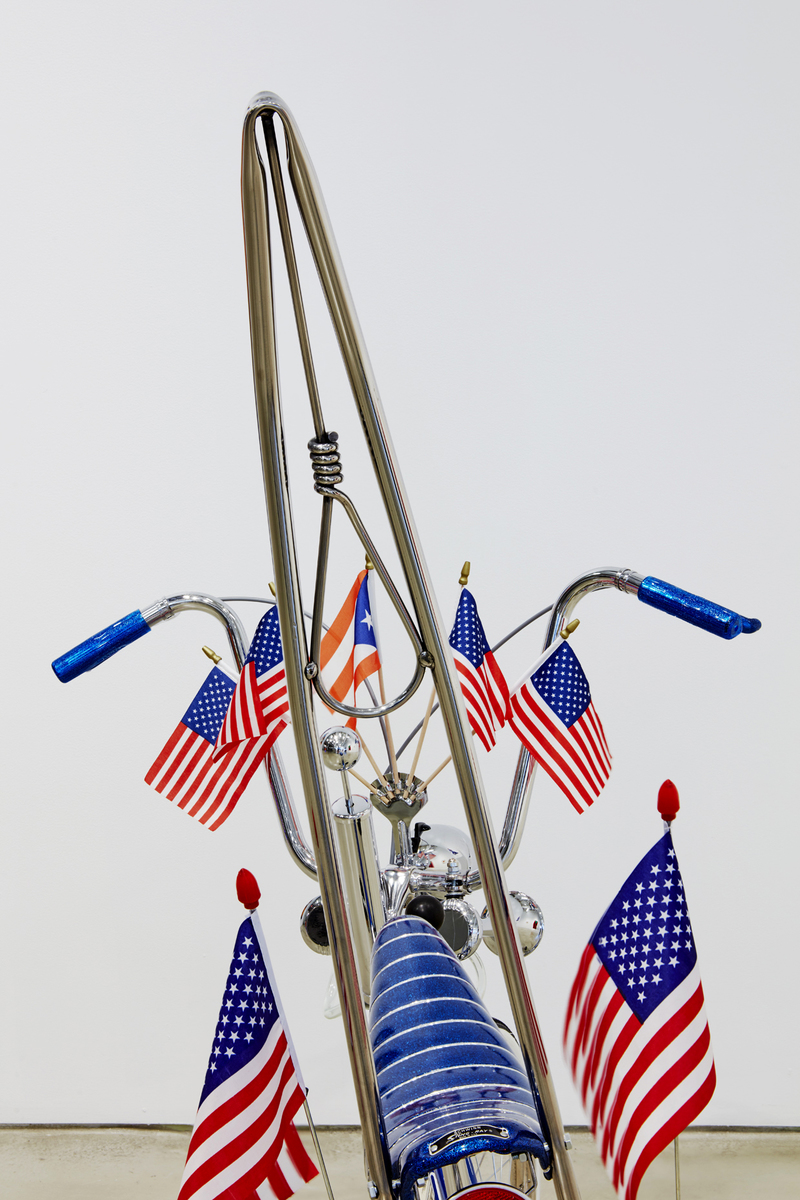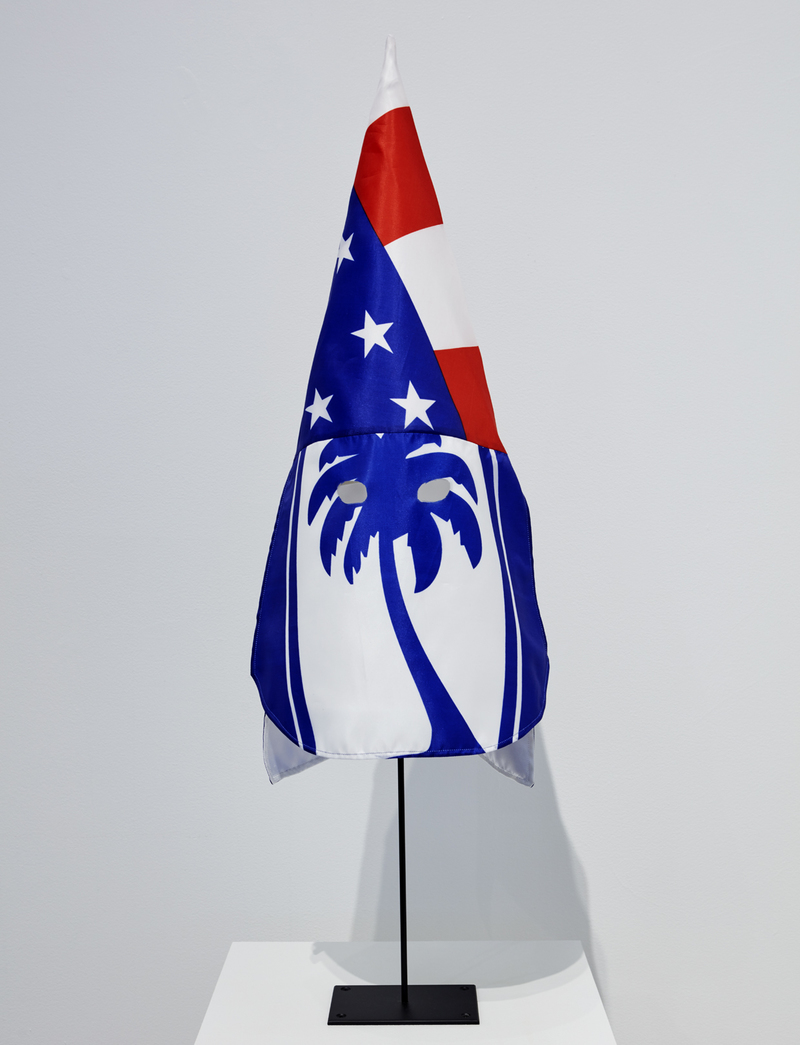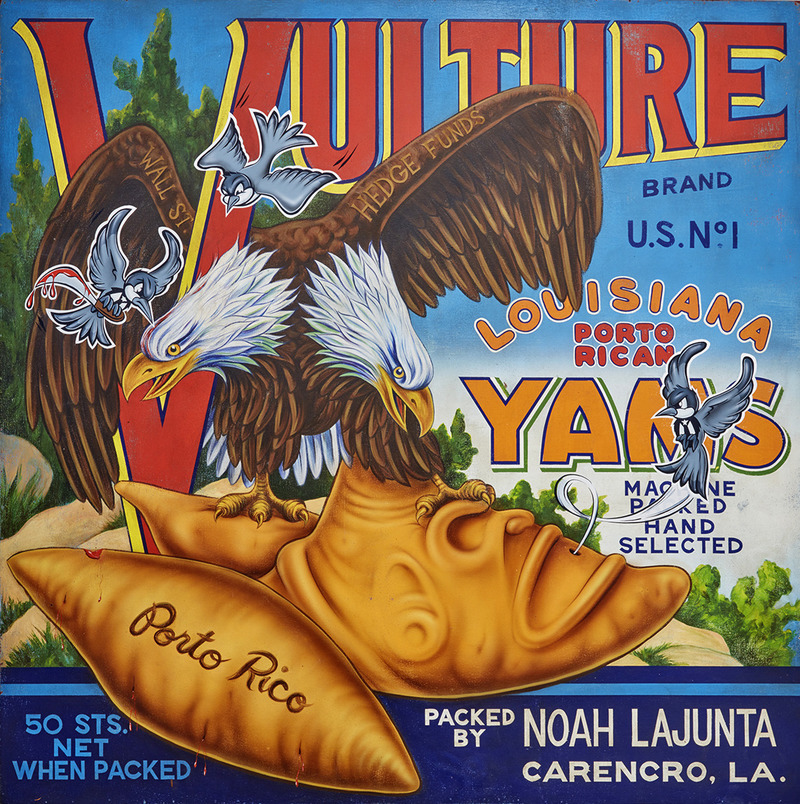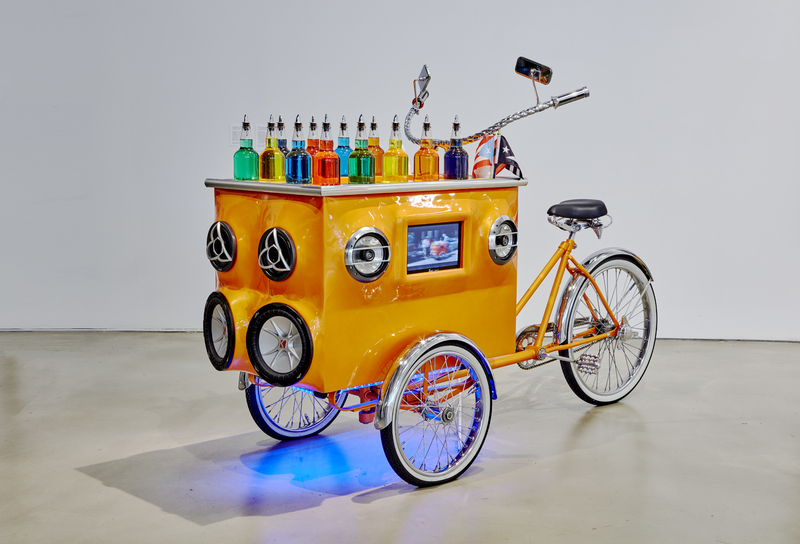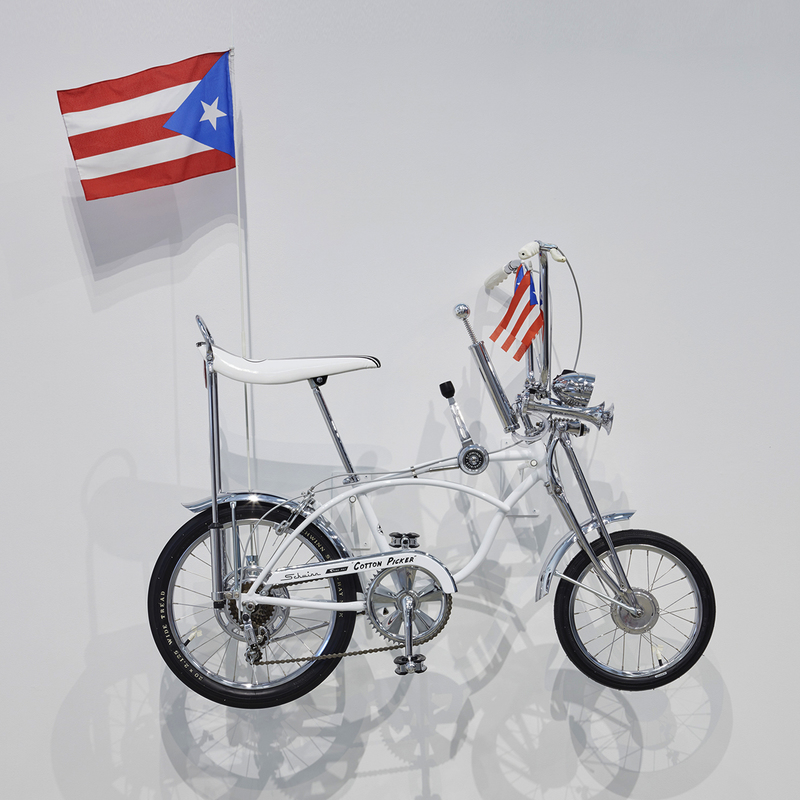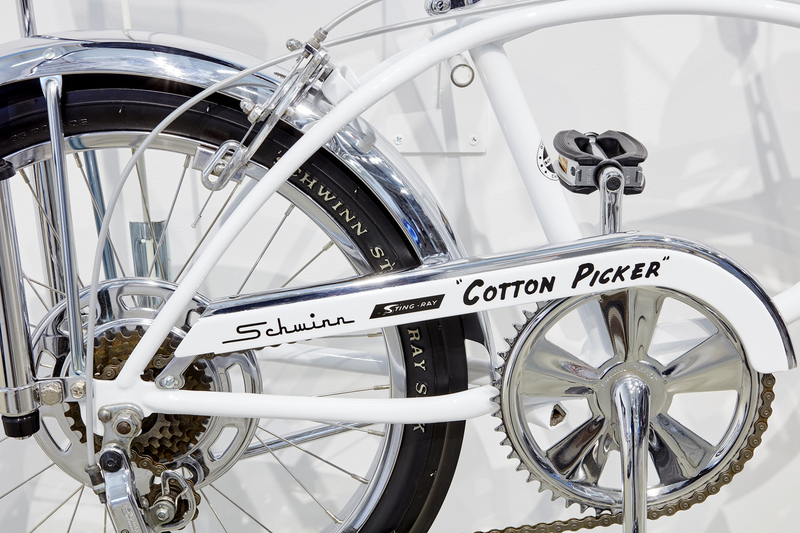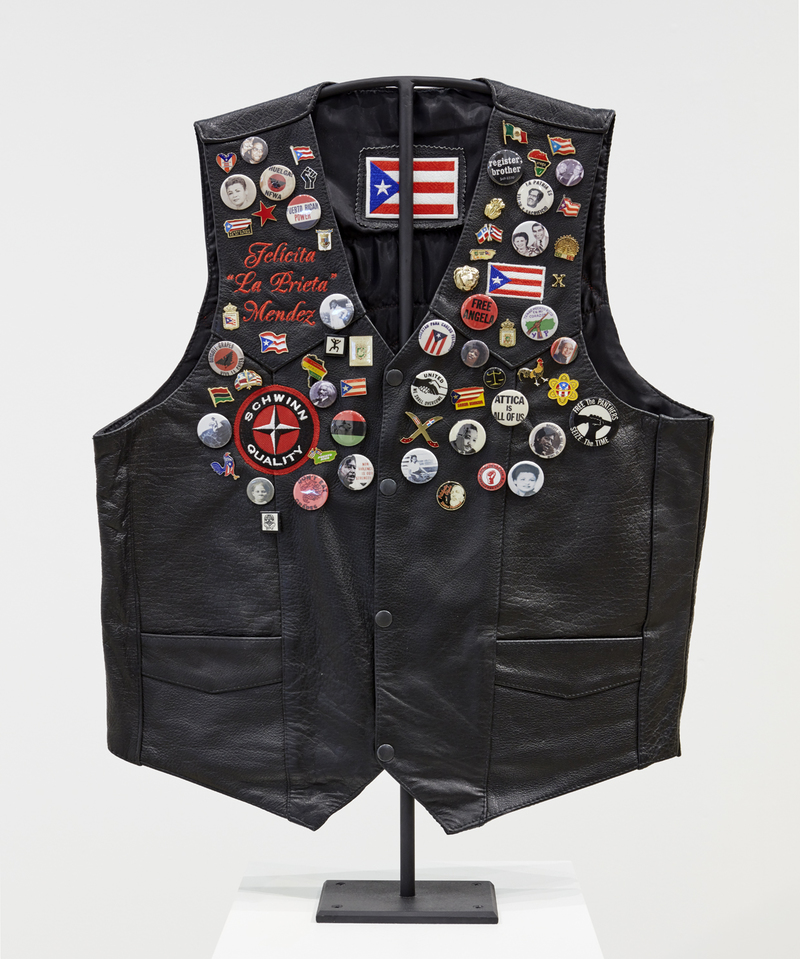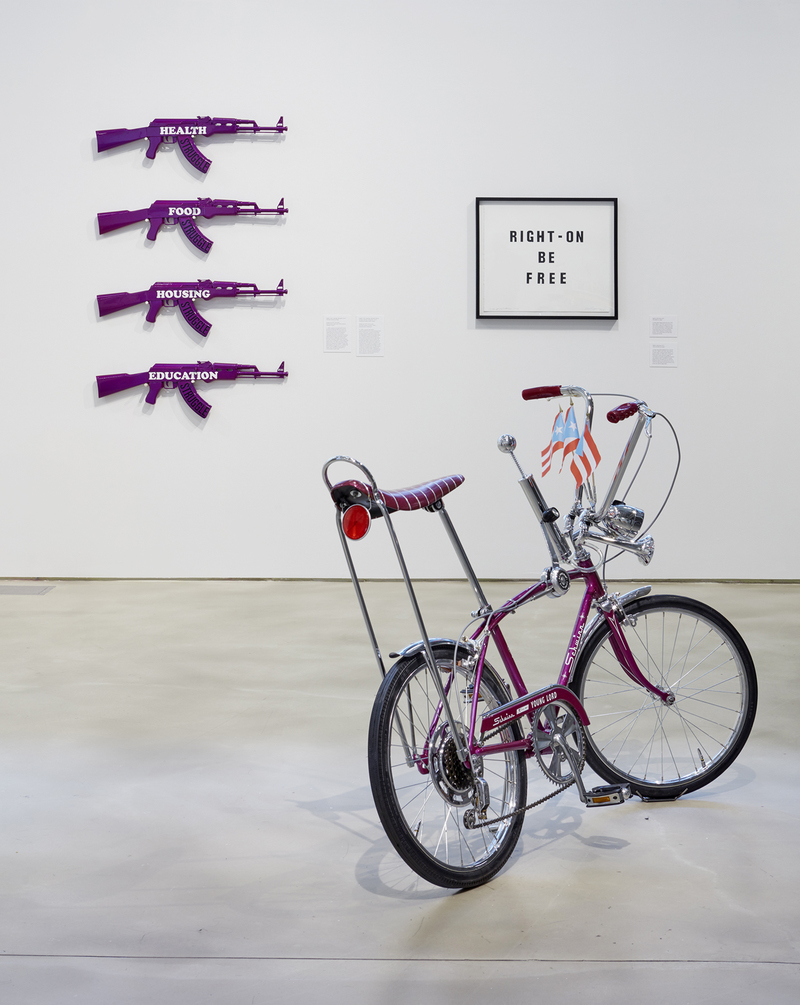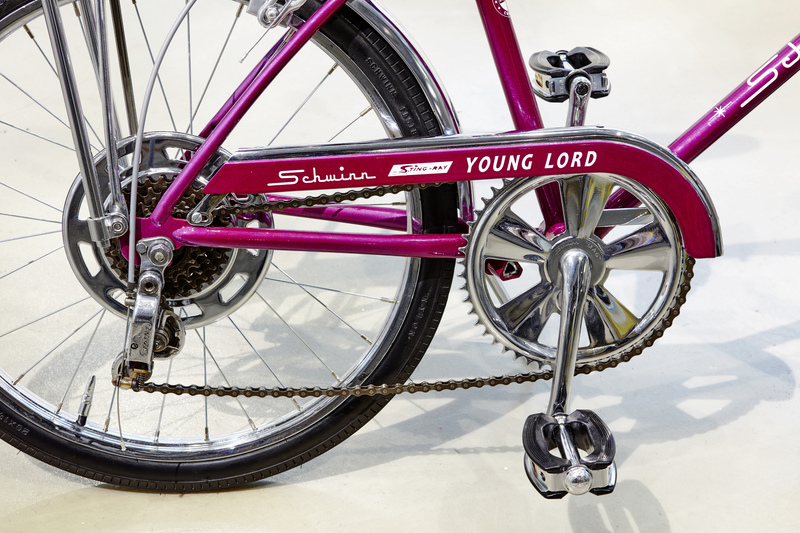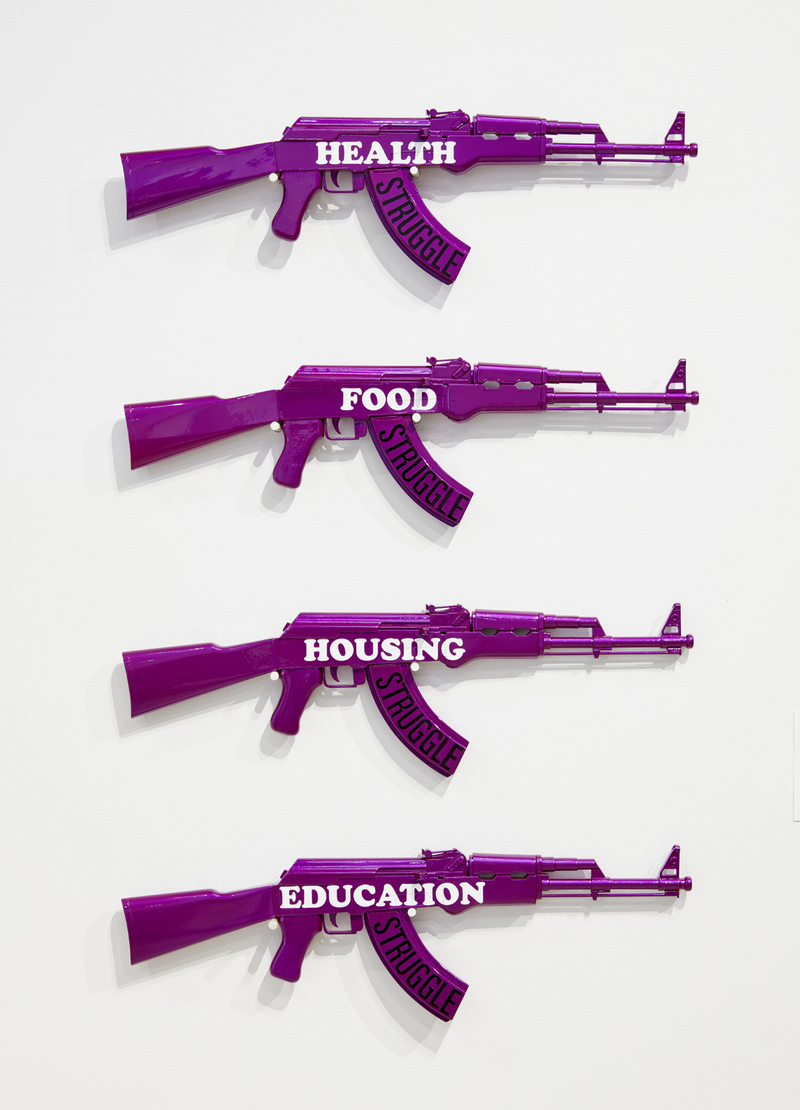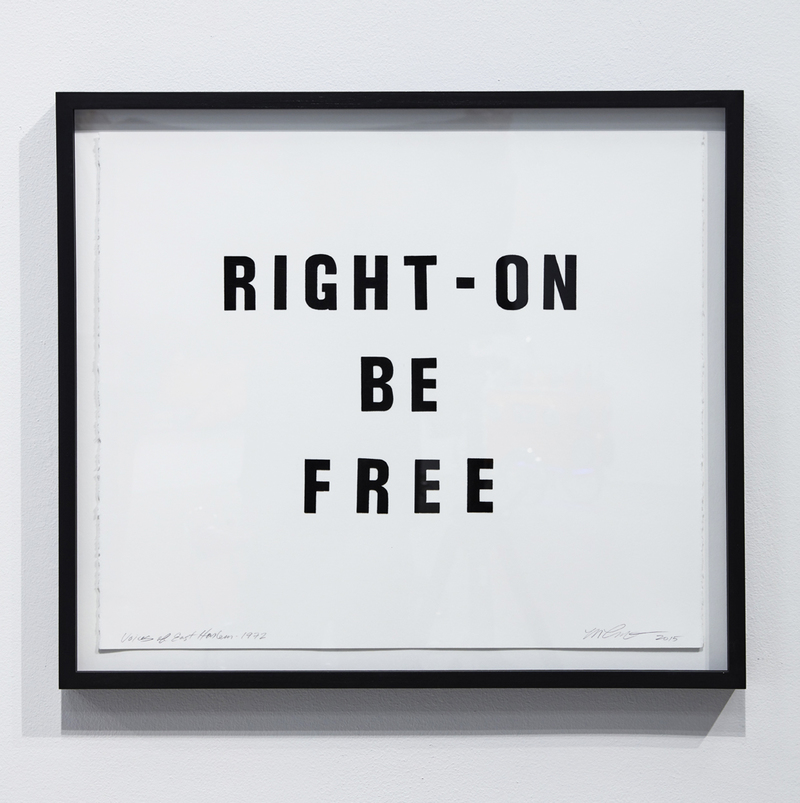Ride or Die (2017) was a solo exhibiton at BRIC featuring newly commisioned work – sculptures featuring customized vintage Schwinn bicycles that commemorate the traditions of Puerto Rican bike clubs in New York. This body of work, combined with paintings, additional sculpture and historic ephemera question the colonial relationship between the United States and Puerto Rico, at the centennial mark of U.S. Citizenship for Puerto Ricans (1917-2017), while exploring the current economic and political crisis on the island and its implications for the diaspora.
Double Phantom / EntroP.R., 2017.
1952 Schwinn Phantoms, restored and customized, flags
120" x 40" x 32"
1952 Schwinn Phantoms, restored and customized, flags
120" x 40" x 32"
Made from the frames of two 1952 Schwinn Phantom bicycles, this work commemorates the year of Puerto Rico’s constitution and the beginning of its Commonwealth status. Unable to move forward without also going backwards, Double Phantom / Entro.P.R. embodies the current state of political dysfunction in Puerto Rico and the paradox of its colonial relationship with the United States.
Background: Pa-lan-te, neon, 2017
120" x 24"
Background: Pa-lan-te, neon, 2017
120" x 24"
Double Phantom / Entro.P.R. (detail), 2017
Made from the frames of two 1952 Schwinn Phantom bicycles, this work commemorates the year of Puerto Rico’s constitution and the beginning of its Commonwealth status. Unable to move forward without also going backwards, Double Phantom / Entro.P.R. embodies the current state of political dysfunction in Puerto Rico and the paradox of its colonial relationship with the United States.
'51 (Se Acabaron las Promesas /The Promises Are Over), 2012-2017
1951 Schwinn Hornet, custom platform, LEDs, flags
1951 Schwinn Hornet, custom platform, LEDs, flags
This Schwinn Hornet dates to 1951, the year before the island became a Commonwealth. '51 also represents the number of states in the U.S. if Puerto Rico were to be annexed. In response to the current economic crisis, Luciano presents the Puerto Rican flag in black-and-white, evoking historic associations with Puerto Rico’s pro-independence Nationalist Party, while transforming the flag from a symbol of mourning to one of protest.
New Era PR"G", 2017
Porto Rico U.S. Volunteer Infantry pin, c. 1901; New Era cap
Porto Rico U.S. Volunteer Infantry pin, c. 1901; New Era cap
The Porto Rico U.S. Volunteer Infantry was the first official regiment of Puerto Ricans serving in the U.S. Puerto Ricans joined the military even before they were U.S. citizens. In 1917, the Jones Act granted citizenship to Puerto Ricans and subjected them to mandatory military conscription, while denying them the right to vote. Since WW1, Puerto Ricans have served in every U.S. military engagement, incurring the highest combat mortality rates of any ethnic group in the military.This work connects history to a new generation questioning what Puerto Ricans fight for, past and present. The “G” on the pin stands for the Volunteer Infantry’s G Company. In hip hop parlance, “G” is a gangster.
RUN-A-BOUT, 2017
1969 Schwinn Run-A-Bout, chrome-plated machete, flags
48" x 60" x 26"
1969 Schwinn Run-A-Bout, chrome-plated machete, flags
48" x 60" x 26"
This 1969 green Schwinn Run-a-Bout references Puerto Rico’s pro-independence party, the Partido Independentista Puertorriqueño (PIP). Here the Puerto Rican flag merges with the colors of the Pan-African flag, reimagining Puerto Rico’s struggle for independence in an Afro-Caribbean historical and cultural framework, as well as in connection with Black liberation movements in the U.S. A chrome-plated machete hangs from the seat of the bike - an historic symbol of labor and resistance in Puerto Rico's independence movement.
Puerto Rican Flag in Red, Black and Green, 2017
96" x 60"
Puerto Rican Flag in Red, Black and Green, 2017
96" x 60"
Estadista (Statehood'er), 2017
1968 Schwinn Fastback, vintage hangman sissy bar, flags
1968 Schwinn Fastback, vintage hangman sissy bar, flags
Blue is the color of the Partido Nuevo Progresista (PNP), Puerto Rico's pro-statehood New Progressive Party. 'Estadista (Satehood’er)' questions aspirations towards statehood, particularly in this current political era with a U.S. administration that has overtly emboldened racist platforms. This bicycle was made in 1968 - a year filled with racial violence and widespread civil unrest in the United States. 1968 was also the year that Puerto Rico elected its first pro-statehood governor.
State-Hood, 2017
Klansman hood sewn from the 2016 campaign flags of the Partido Nuevo Progresista (PNP), Puerto Rico's pro-statehood party.
Klansman hood sewn from the 2016 campaign flags of the Partido Nuevo Progresista (PNP), Puerto Rico's pro-statehood party.
The palm tree is a symbol of Puerto Rico's pro-statehood party. 'State-Hood' questions the idea of statehood for Puerto Rico, particularly at a time when the current U.S. administration that has been so openly racist in both its rhetoric and policy making.
Pimp My Piragua, 2008-2009
Customized pushcart tricycle, sound sytem, video, LED's
Customized pushcart tricycle, sound sytem, video, LED's
Pimp My Piragua is a mobile public art project that commemorates the innovations of Latino street vendors, transforming a traditional pushcart for selling shaved ice (piraguas) into a hyper-modified tricycle-pushcart with a hi-fi sound and video system.
Porto Rican Cotton Picker (detail), 2011
1971 Schwinn Cotton Picker, restored and customized, flags
1971 Schwinn Cotton Picker, restored and customized, flags
From 1970-1971 Schwinn produced a bicycle called the "Cotton Picker". Here, the bicycle becomes an homage to the Puerto Rican families recruited to work in Arizona's cotton fields during the 1920's - one of the earliest labor migrations of Puerto Ricans to the U.S.
Freedom Rider (homage to Felícita Mendez), 2011
Emboidered leather vest, vintage buttons
Emboidered leather vest, vintage buttons
Felícitas Méndez and her family migrated to Arizona from Puerto Rico in the 1920s for work in the cotton fields. After protesting working conditions in Arizona, they moved to California where her and her husband Gonzálo would fight against segregation laws in public schools. Méndez v. Westminster was a landmark civil rights case that propelled California towards becoming the first state to desegregate public schools (1947).
